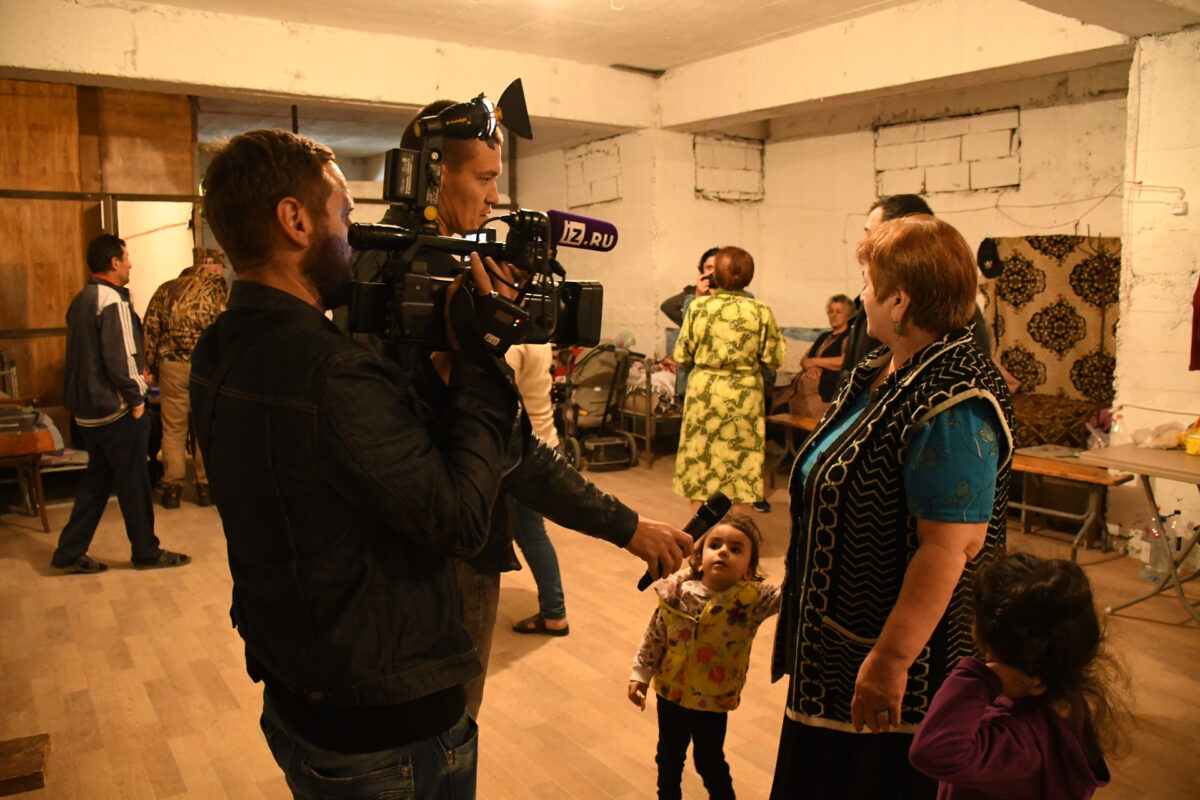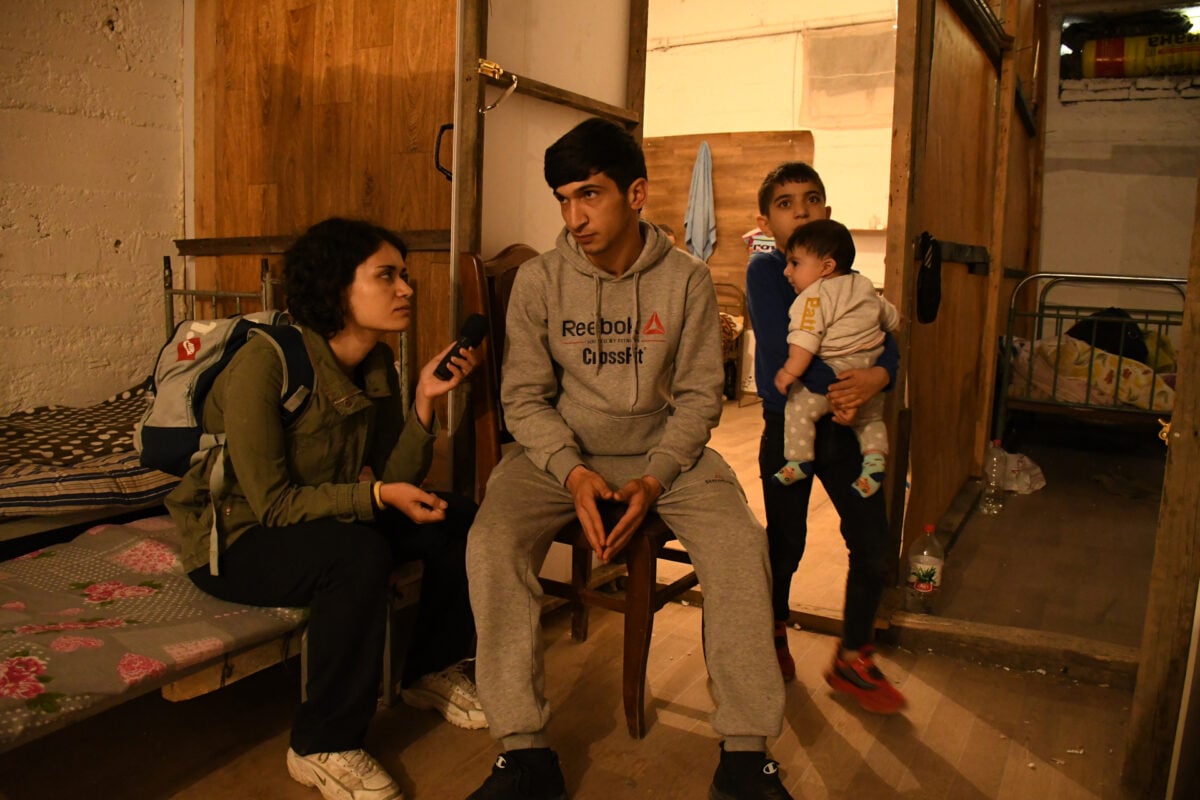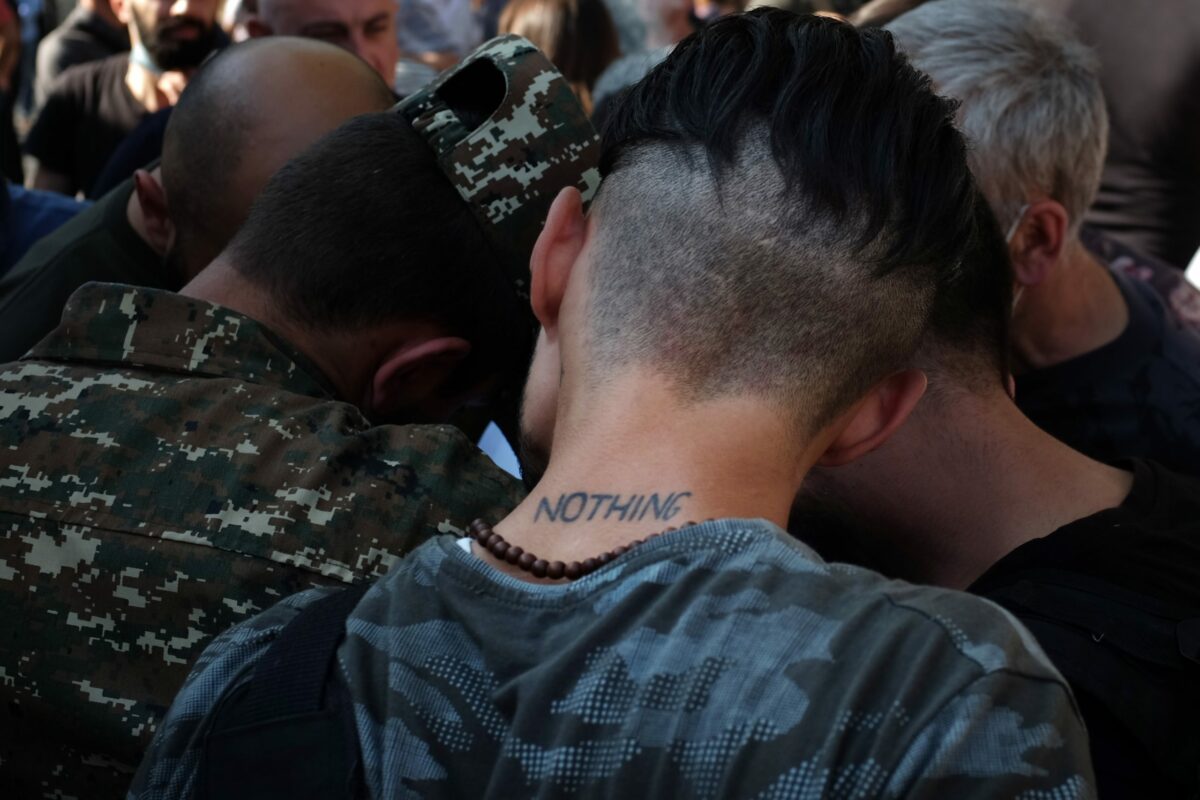It is difficult to take photos during a war not only because of the restrictive requirements of the media, but also because you need to be constantly vigilant, editing and thinking about the principle of non-harm.
Photo documentation of actual hostilities is made by government agencies using their own filters. And individual photographers or editors, mostly try to capture the moment, which can not be explained and described only in text.
From the very first day, the photographers documenting the 2020 Armenian-Azerbaijani war paid attention to the drastic change in the lifestyle of the civilian population, entering bomb shelters, hospitals, and the yards of military commissariats. In general, yards and private areas, which expanded to the borders of the whole state.
In addition to weapons and front lines, the perspective from behind was used, the aftermath of the war, which changed the lives of many right now and immediately. People’s life was divided into stages, before the war and during the war …
Photographer Narek Aleksanyan, who is now in Artsakh, is trying to find human stories.
He does not see the military operations and the front line, but he constantly hears it. “We hear war day and night, the sound of explosions, the sound of alarms. You do not know what will happen in the next minute. And you know there is no safe haven now.”
“Journalists are not protected by anything. Or we are protected by various international conventions, but they are just words, a text written on paper. And in reality, the opponent will not see that you have a ‘Press’ sign,” he said.
Narek’s series of shelters, where people with families and children try to come to terms with the sheltered situation, is very influential.
People, their stories and the journalists documenting those stories are in the same area of a few square meters, huddled together.


All journalists working in Artsakh are well aware that security issues have never been so important, as the hostilities are large-scale and with heavy gunfire.
This photo of Areg Balayan is itself a novel with its own prehistory and a long-long journey to the future. And you realize how difficult it is to find the equilibrium point where the emotions of the characters are suppressed by the last effort, and the emotions of the viewer will still go through many different stages.

For Vahan Stepanyan, photography is a means. “The message is what’s important. Once you understand that, then it is easy,” he said.
He photographed people who register as volunteers to travel to Artsakh, see off their friends and loved ones. They are enlisted then placed on buses going to war.


People become symbols. If the photographer wants it that way.
Nune Hakhverdyan







